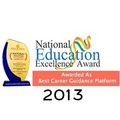An international standardized test of English language competency for non-native English speakers is the International English Language Testing System (IELTS). It was started in 1989 and is jointly managed by the British Council, IDP: IELTS Australia, and Cambridge Assessment English. Over 10,000 organizations, including colleges, employers, and immigration authorities, accept IELTS, one of the most well-known English language tests in the world.
The IELTS test is divided into four sections:
- Listening (30 minutes)
- Reading (60 minutes)
- Writing (60 minutes)
- Speaking (11-14 minutes)
On a scale of 0 to 9, with 0.5 increments, each section is graded. The average of the four section scores is used to determine the band score overall.

What is IELTS syllabus?
The IELTS syllabus is divided into four sections:
- Listening
- Reading
- Writing
- Speaking
Both the Academic and General Training versions of the IELTS test have identical Listening and Speaking portions. For the two test versions, the Reading and Writing parts are different.
The IELTS curriculum is extensive and includes a variety of English language abilities. You can improve your chances of passing the IELTS test by becoming familiar with the material and practice frequently.
IELTS syllabus in detail
| Section | Task | Type of text | Topic |
|---|---|---|---|
| Listening | Part 1 | Conversation | Everyday setting |
| Listening | Part 2 | Monologue | General topic |
| Listening | Part 3 | Conversation | Academic topic |
| Listening | Part 4 | Monologue | Academic topic |
| Reading | Academic | Textbook, academic journal, or other academic text | Academic topic |
| Reading | General Training | Newspaper, magazine, or other general interest text | General interest topic |
| Reading | Mixed | Variety of text types, including academic and general interest texts | Academic and general interest topics |
| Writing | Academic Task 1 | Descriptive or analytical | Academic topic |
| Writing | Academic Task 2 | Essay | Academic topic |
| Writing | General Training Task 1 | Letter | Everyday topic |
| Writing | General Training Task 2 | Essay | General interest topic |
| Speaking | Part 1 | General introduction and interview | Everyday topics |
| Speaking | Part 2 | Long turn | Given topic |
| Speaking | Part 3 | Discussion | Topic from Part 2 |
IELTS syllabus preparation tips for different sections
Listening
- Try to hear as much English as you can. This will enable you to become accustomed to the many English dialects and accents that you will hear on the IELTS Listening test. You can watch English movies, TV series, and podcasts.
- To take notes while listening is a skill. This will make it easier for you to retain the knowledge you hear and ensure that your answers to the questions are accurate. Practice taking notes while listening to various audio recordings, such as conversations, lectures, and news broadcasts.
Reading
- Read a range of English-language works. This will assist you in developing your reading comprehension abilities and acclimating to various writing styles. You can read articles from books, periodicals, newspapers, and the internet.
- Be able to scan and skim. Skimming is reading a text rapidly to understand its main points. Reading quickly to extract specific information from a text is called scanning. So that you can respond to questions in the IELTS Reading test swiftly, practice skimming and scanning various sorts of literature.
Writing
- Write a variety of articles and letters to improve your writing. You must compose a variety of essays and letters for the IELTS Writing test, including argumentative, persuasive, and analytical essays as well as formal and casual letters. To be ready for anything on test day, practice composing several types of documents.
- Make use of a range of grammatical and vocabulary options. You will be graded on the variety of vocabulary and grammar structures you use in the IELTS Writing test. To impress the examiner, employ a diversity of vocabulary and language patterns in your work.
Speaking
- Do as much speaking practice in English as you can. You can speak English with family, friends, or a tutor for practice. Making a tape of yourself while speaking English and playing it back will help you improve.
What is the difference between the Academic and General Training IELTS syllabuses?
Academic IELTS:
There are excerpts from academic sources, including textbooks and periodicals, in the Academic Reading component of the IELTS exam. Compared to the portions in the General Training Reading part, these texts are frequently lengthier and more intricate. The questions in the Academic Reading portion are harder as well, and you must comprehend academic vocabulary and sentence construction to successfully answer them.
General Training IELTS:
IELTS test passages from a variety of general interest literature, including newspapers, periodicals, and brochures, are found in the General Training Reading area. Compared to the sections in the Academic Reading portion, these are usually shorter and less challenging. The questions in the General Training Reading part are likewise easier and concentrate on your comprehension of the passages’ core themes and supporting facts.
What types of questions are asked in the IELTS Listening test?
- Choose the right response from a list of three or four possibilities when faced with a multiple-choice question.
- Fill in the blanks: In this type of question, you must add the missing words to finish a sentence or paragraph.
- You must match things from one list to those from the other in order to correctly answer these questions.
- Choose if a sentence is true or false in these true/false questions.
- Short answer: You must provide a succinct response to each question in these questions.
- Fill out the informational table: You must fill out the informational table for these questions.
- Diagram labeling: You must label a diagram for these questions.
- You must complete a flow chart in order to answer these questions.
The IELTS Listening test’s questions are meant to gauge your proficiency in understanding spoken English in a range of accents and situations. Various speakers, both native and non-native English speakers, will be heard discussing a range of subjects, such as commonplace conversations, academic lectures, and news stories.
Frequently Asked Question
The IELTS Reading test contains a variety of question types, including multiple choice, fill in the blanks, matching, short answer, and true/false. The questions are designed to assess your ability to understand written English in a variety of contexts.
The IELTS Writing test contains two tasks. In Task 1, you are required to write a descriptive or analytical essay on a given topic. In Task 2, you are required to write an essay on a general interest topic. The tasks are designed to assess your ability to write effectively in English.
The IELTS syllabus covers the four main English language skills: Listening, Reading, Writing, and Speaking. The syllabus for each section is designed to assess your ability to use English in a variety of contexts.






